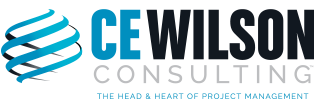Project management is more than just a beneficial skill; it’s a core competency that benefits…

What is My Project Manager Talking About?
Learn the meaning of common project management terms
Most industries and professions use language or jargon that is familiar to those in the know, but completely foreign to lay people or industry newcomers. The field of project management is no different. What can make project management terminology even more confusing, is the fact that there are many terms that are commonly understood to mean one thing, but have a different meaning in the project management context. If you’ve never worked with a project manager before, or just need a refresher on some terms and phrases, keep reading.
Program vs. Project
These terms are often incorrectly used interchangeably, but actually have different meanings. A project is a single initiative designed to deliver specific objectives. It has a clear beginning and end, and stands alone. A program is a series of projects or initiatives that achieve a higher level objective. If there’s more than one project tied to achieving the same goal, that’s a program.
Duration vs. Effort
Used during the planning phase of a project, effort refers to the actual number of hours it will take to complete the work. Duration refers to the length of time or course of time a task will take. For example, a task may take a total of only six hours to complete so this equates to the amount of effort. However, to complete the six-hour task, it may take a total of two days, which is referred to as the duration.
Planned Work vs. Actual Work
These are pretty straightforward, but still good to know. Planned work is how many hours of work you plan for something to take. Actual work is how many hours of work it actually took to complete the task.
Agile vs. Waterfall
Unless you’re a project management veteran, you probably haven’t heard these terms used in this context. Agile and waterfall are two different methodologies for how to manage a project.
Waterfall is commonly used in traditional projects. Think of a waterfall that flows from the top down. It’s a linear, sequential way of managing a project, where the next task doesn’t begin until the previous task ends.
An agile project is often used in IT development projects and is more like a roller coaster. It doesn’t progress neatly from point-to-point. Instead, it may loop back and around and back again, depending on what happens after one task is completed and tested. Depending on the results of testing, you may have to go back and redo something before you move on to the next task. Agile projects are completed in cycles, which may be called “sprints.”
Change Control vs. Change Management
Change control is the process of how you’re going to go about managing changes to the project’s scope, cost or schedule (or combination thereof). Changes are reviewed, evaluated and the decision is made whether to approve, reject or defer the changes. Change management refers to how you’re going to introduce and manage the change created by the project to the end user. It’s all about how you communicate to the user and prepare the user for the anticipated impact to all users and stakeholders.
Stakeholder vs. Customer
Stakeholders are people internal or external to the organization who have an interest and invested stake in the success of the project and its impact. Anyone directly or indirectly affected by a project is considered a stakeholder. Customers can be internal or external individuals who receive services or purchase products. A customer also often has the ability to provide feedback on the product or service they’ve received/purchased.
Now that you’ve reviewed these common project management terms, you’ll have a much easier time understanding and communicating with your project manager. If you can think of other commonly misunderstood terms that could use some clarification, leave a comment below.




